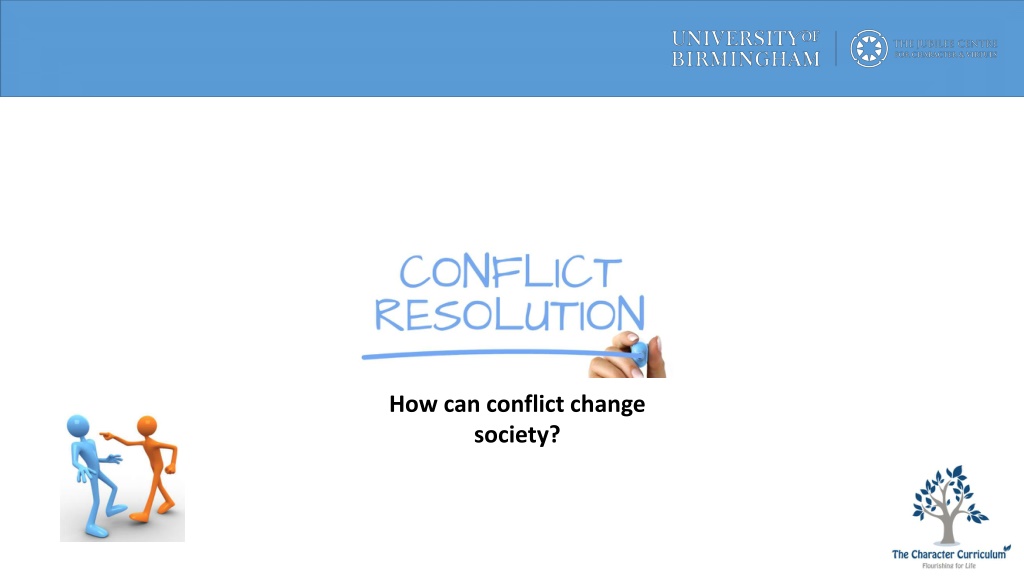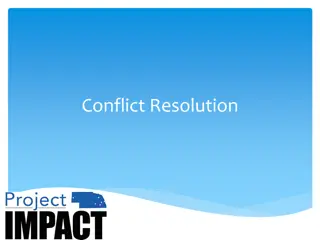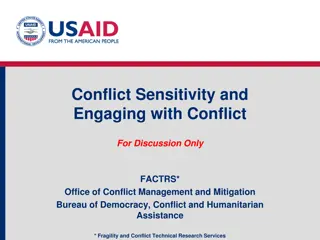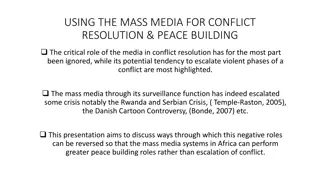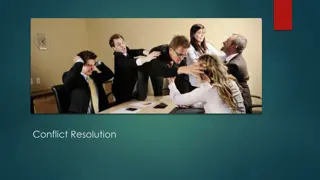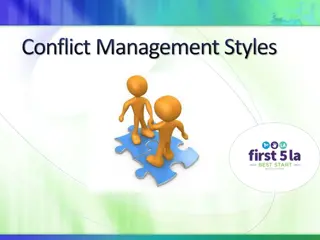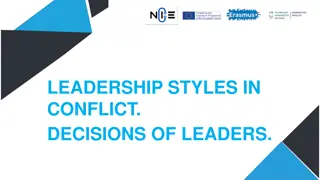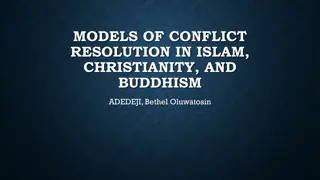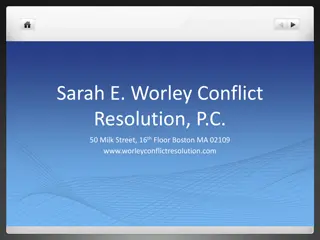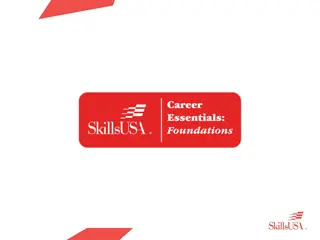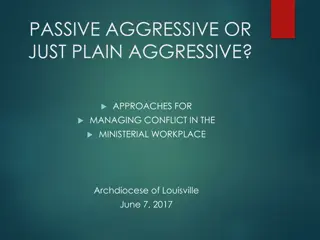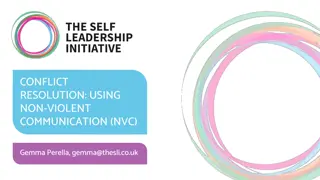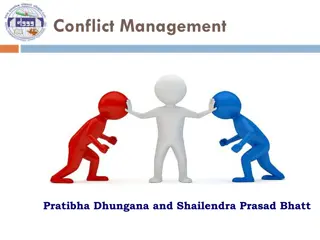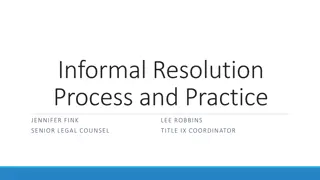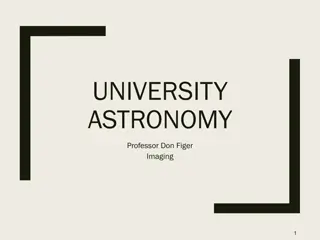Understanding Conflict and Resolution Through Historical and Everyday Examples
Explore the impact of conflict on society with examples ranging from Martin Luther King, Jr.'s civil rights activism to everyday encounters, highlighting the challenges faced, virtues demonstrated, and strategies for de-escalation. Delve into the effectiveness of peaceful protest against violence, the importance of standing up to injustice, and the role of intervention in addressing conflicts.
Download Presentation

Please find below an Image/Link to download the presentation.
The content on the website is provided AS IS for your information and personal use only. It may not be sold, licensed, or shared on other websites without obtaining consent from the author. Download presentation by click this link. If you encounter any issues during the download, it is possible that the publisher has removed the file from their server.
E N D
Presentation Transcript
How can conflict change society?
Can you think of any examples in the news around issues of conflict? What has happened for this issue to escalate in this way? Has there been an attempt for anyone to deescalate the problem in this scenario? If so, how? Can you think of any examples (well known or known to you) where someone has managed to de-escalate a difficult situation? If so, how?
Martin Luther King, Jr. was a civil rights activist in the 1950s and 1960s. He led non-violent protests to fight for the rights of all people, including African Americans. He hoped that America and the world could become a society where race would not impact a person's civil rights. In his first major civil rights action, Martin Luther King, Jr. led the Montgomery Bus Boycott. This started when Rosa Parks refused to give up her seat on a bus to a white man. She was arrested and spent the night in jail. As a result, MLK helped to organize a boycott of the public transportation system in Montgomery. The boycott lasted for over a year. It was very tense at times. MLK was arrested and his house was bombed. In the end, however, Martin prevailed and segregation on the Montgomery buses came to an end. In 1963, Martin Luther King, Jr. helped to organize the famous "March on Washington . Over 250,000 people attended this march in an effort to show the importance of civil rights legislation. Some of the issues the march hoped to accomplish included an end to segregation in public schools, protection from police abuse, and to get laws passed that would prevent discrimination in employment. It was at this march where Martin gave his "I Have a Dream" speech. This speech has become one of the most famous speeches in history. The March on Washington was a great success. The Civil Rights Act was passed a year later in 1964.
In what ways did MLK engage in conflict? Was peaceful protest against backdrop of violence against people of colour an effective tool for change? Would retaliation with violence have helped the situation? What challenges was MLK up against in attempting to change society in this way? What virtues did he use as he stood up to injustice and racism?
Dina watched as Joe was pushed about, jostled and finally had his bag pulled open spilling its contents everywhere. You re so gay, the lads shouted at Joe as they pushed past him and started throwing his stuff around. Dina had seen this all too often and felt really bad for Joe. Dina hated getting into conflicts. She would much rather walk away and mind her own business but she felt such anger and rage at the group of guys for their behaviour. She could just tell a teacher, but nothing seemed to be getting done about it or, she could intervene and speak up against them. She was also concerned that Joe would lose face though with her speaking up on his behalf. He usually shrugged this behaviour off but she could see it was really getting to him this time. What is the problem? What virtues are involved? What is a wise solution? Is there more than one? What would you do in this situation? Have you experienced a situation like this?
